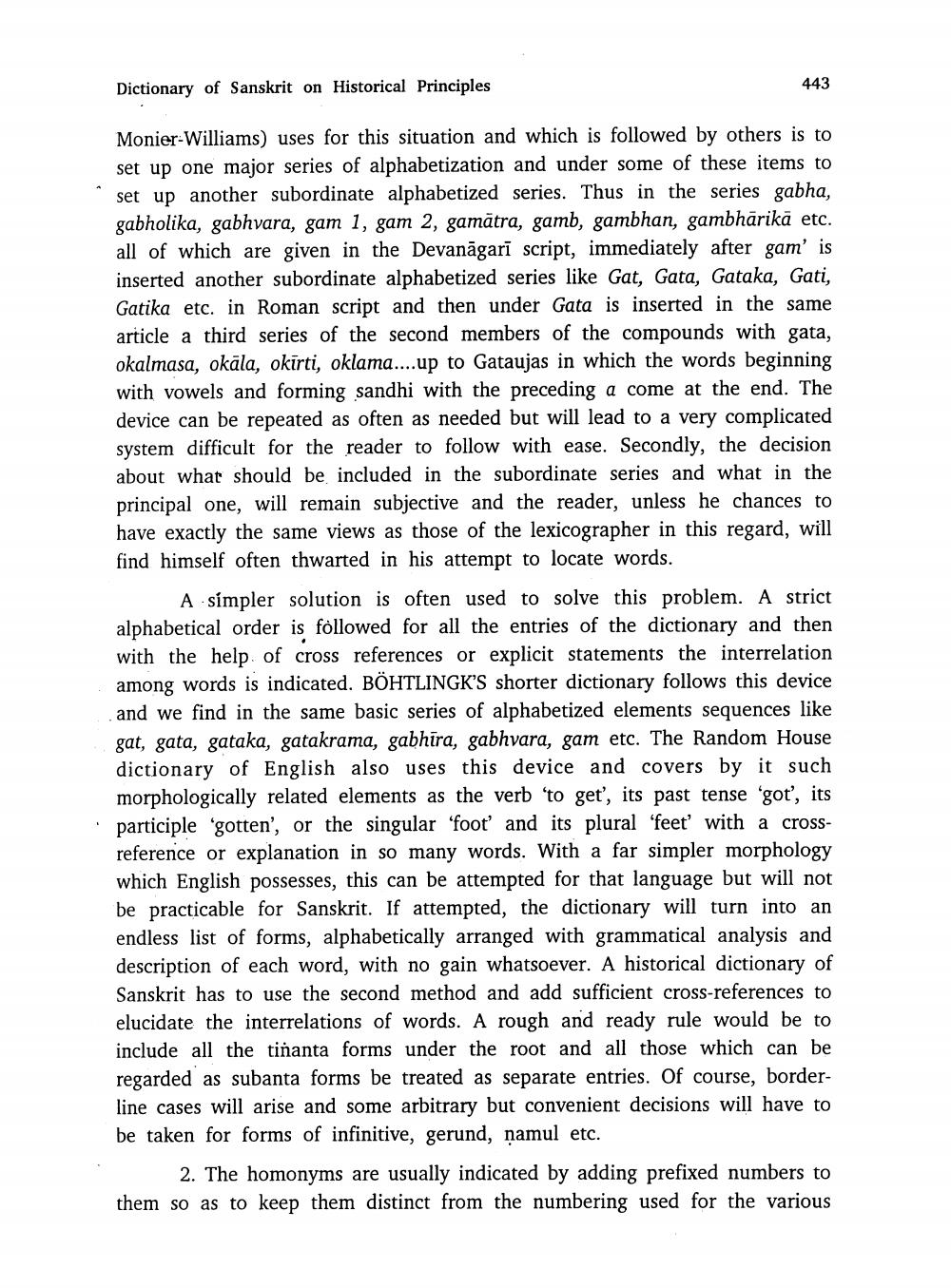________________
Dictionary of Sanskrit on Historical Principles
443
Monier-Williams) uses for this situation and which is followed by others is to set up one major series of alphabetization and under some of these items to set up another subordinate alphabetized series. Thus in the series gabha, gabholika, gabhvara, gam 1, gam 2, gamātra, gamb, gambhan, gambhärikä etc. all of which are given in the Devanāgarī script, immediately after gamis inserted another subordinate alphabetized series like Gat, Gata, Gataka, Gati, Gatika etc. in Roman script and then under Gata is inserted in the same article a third series of the second members of the compounds with gata, okalmasa, okāla, okirti, oklama....up to Gataujas in which the words beginning with vowels and forming sandhi with the preceding a come at the end. The device can be repeated as often as needed but will lead to a very complicated system difficult for the reader to follow with ease. Secondly, the decision about what should be included in the subordinate series and what in the principal one, will remain subjective and the reader, unless he chances to have exactly the same views as those of the lexicographer in this regard, will find himself often thwarted in his attempt to locate words.
A símpler solution is often used to solve this problem. A strict alphabetical order is followed for all the entries of the dictionary and then with the help of cross references or explicit statements the interrelation among words is indicated. BÖHTLINGK’S shorter dictionary follows this device and we find in the same basic series of alphabetized elements sequences like gat, gata, gataka, gatakrama, gabhīra, gabhvara, gam etc. The Random House dictionary of English also uses this device and covers by it such morphologically related elements as the verb 'to get', its past tense got, its participle'gotten', or the singular 'foot and its plural 'feet' with a crossreference or explanation in so many words. With a far simpler morphology which English possesses, this can be attempted for that language but will not be practicable for Sanskrit. If attempted, the dictionary will turn into an endless list of forms, alphabetically arranged with grammatical analysis and description of each word, with no gain whatsoever. A historical dictionary of Sanskrit has to use the second method and add sufficient cross-references to elucidate the interrelations of words. A rough and ready rule would be to include all the tiñanta forms under the root and all those which can be regarded as subanta forms be treated as separate entries. Of course, borderline cases will arise and some arbitrary but convenient decisions will have to be taken for forms of infinitive, gerund, namul etc.
cond me. A rous
and
is, of
2. The homonyms are usually indicated by adding prefixed numbers to them so as to keep them distinct from the numbering used for the various




